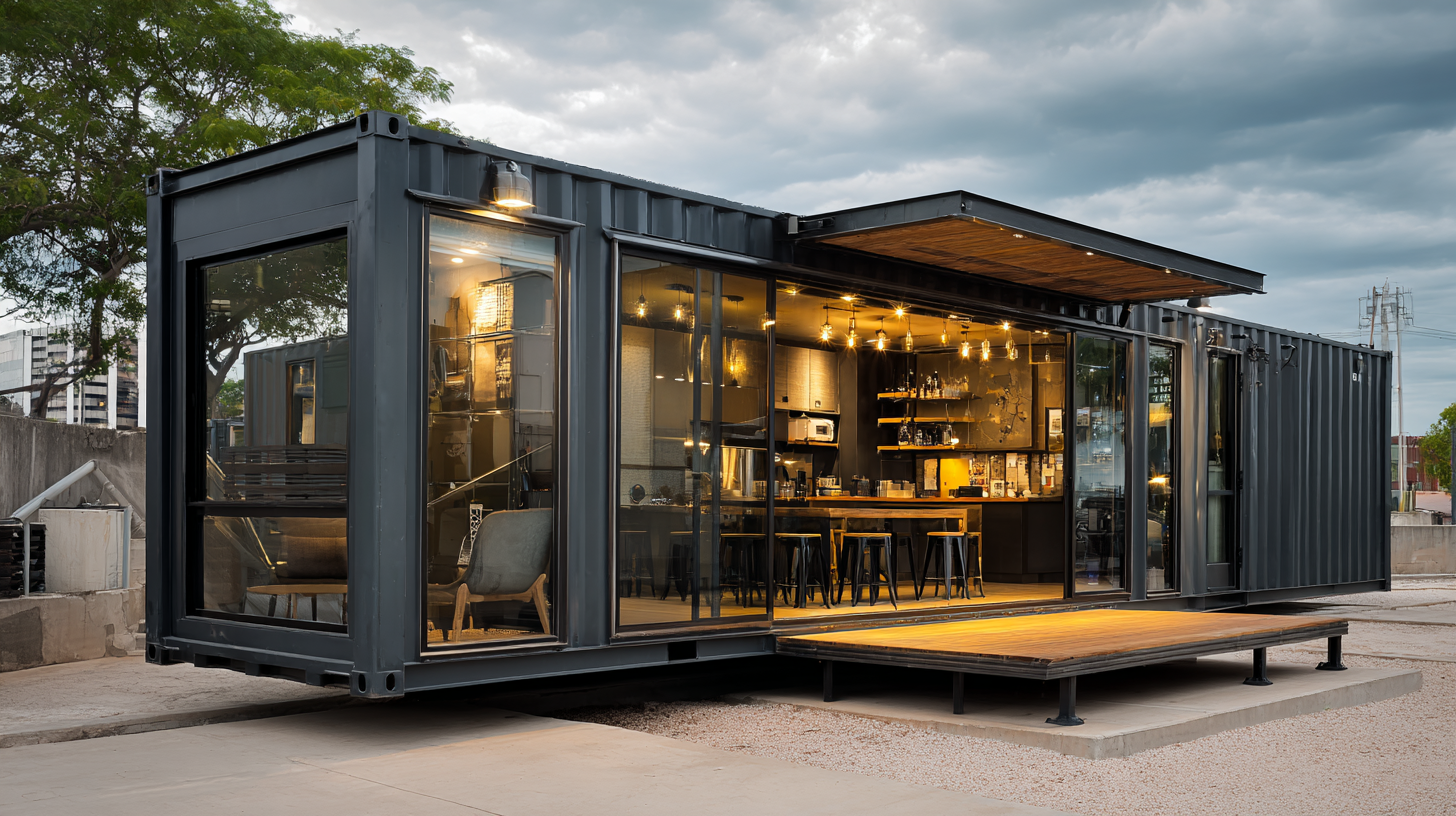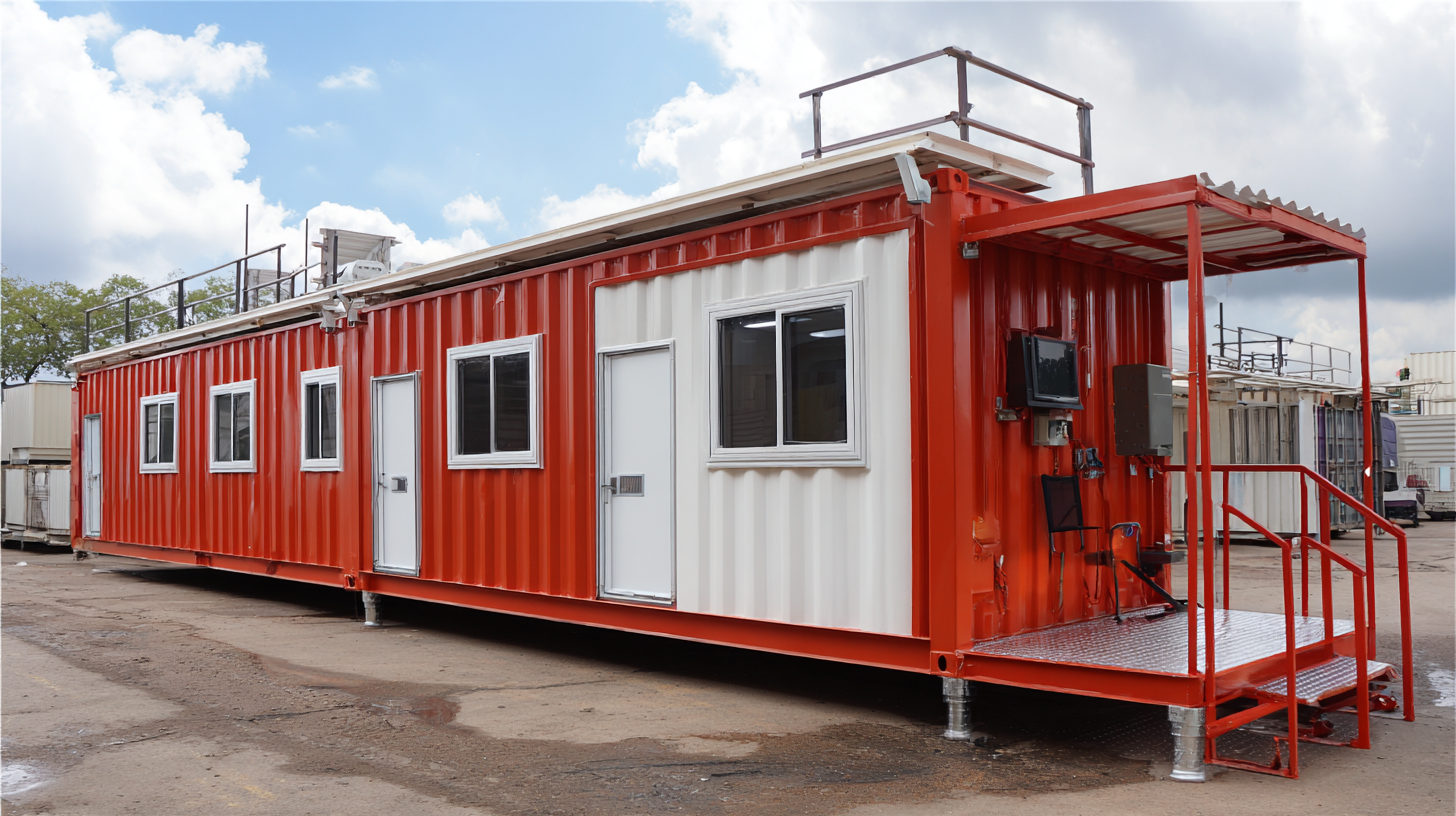In recent years, the concept of a "Shipping Container Office" has gained significant traction as businesses seek innovative and sustainable workspace solutions. According to a report by the Container Homes Association, the global market for shipping container modifications is expected to reach $73.7 billion by 2025, driven by the growing demand for affordable, flexible, and environmentally-friendly office spaces. These modular offices not only offer a cost-effective alternative to traditional construction but also come with unique technical specifications that cater to various business needs. Understanding these specifications is crucial for anyone looking to invest in a shipping container office, as it can significantly impact functionality, durability, and overall aesthetic appeal. This blog will delve into the essential technical specifications of the best shipping container offices and provide guidance on how to select the right one for your specific requirements.

When selecting a shipping container office, it’s crucial to consider several key features that can affect functionality and long-term satisfaction. According to a report by IBISWorld, the mobile office market has seen a significant growth of approximately 6.2% annually, highlighting the increasing demand for flexible office solutions. One of the primary features to look for is insulation, as proper insulation can regulate temperature and reduce energy costs. A well-insulated office can save up to 30% in heating and cooling expenses, based on industry surveys, making it an essential consideration for any shipping container setup.

Another important factor is the structural integrity and safety of the container. The American Society of Civil Engineers reports that office spaces constructed from shipping containers must adhere to local building codes, which include specifications for load-bearing capacities and fire safety. Ensuring that your chosen unit has been certified and inspected can guarantee a safe work environment. Additionally, natural light is vital for productivity; opting for models with large windows or skylights can enhance the atmosphere while reducing the reliance on artificial lighting, further optimizing energy usage and creating a more pleasant workspace.
When selecting the best shipping container office, understanding essential technical specifications is crucial for optimal functionality.
These specifications generally include insulation quality, structural integrity, ventilation systems, and environmentally friendly features.
Proper insulation ensures a comfortable working environment, while robust structural design guarantees safety and longevity.
Adequate ventilation is key to maintaining air quality, which is increasingly important as more companies invest in remote and on-site work environments to empower their employees.
Tips to keep in mind: First, always check the insulation rating of a container office before finalizing your choice; it should meet or exceed local building codes.
Second, consider the integration of smart technology, such as network connectivity and energy-efficient systems, to enhance productivity and streamline workflows.
AI solutions can also be integrated for task management and operational efficiency, mirroring the advancements seen in CRM and POS systems that boost business performance.
Additionally, assess the layout of the shipping container office to ensure it meets your company's needs.
Flexibility in design can accommodate various work styles, promoting collaboration and individual work.
By choosing a container office that adheres to these specifications, businesses can create a conducive work environment that not only meets technical standards but also supports employee satisfaction and productivity.
Shipping container offices have gained popularity for their versatility and sustainability. Different designs cater to various needs, from small startups to larger enterprises. For instance, a single-container office serves well for freelancers or small teams, offering a compact yet functional workspace. In contrast, multiple containers can be combined to create larger offices, complete with meeting rooms and collaborative spaces.
The adaptability of shipping containers allows for innovative solutions tailored to specific environments. In Ahmedabad’s hot climate, designs can incorporate insulation and ventilation to ensure comfort. Furthermore, the aesthetic appeal of these transformed containers adds character to the workspace, blending functionality with modern design.
Ultimately, choosing the right type of shipping container office depends on your business size, functional requirements, and aesthetic preferences, making it essential to explore the various options available.

When considering a shipping container office, several factors are essential to ensure you make the right choice. First, think about the size of the container. Shipping containers come in various dimensions, typically 20 and 40 feet long. The space you require depends on the number of employees who will use the office and the type of work you’ll be conducting. It's vital to assess your needs—whether it's for an open-plan workspace, private offices, or meeting rooms—to select the size that maximizes productivity and comfort.
Another critical factor is location. The geographical area impacts not only the logistics of delivery but also the climate considerations for your office. Insulation and ventilation become crucial in extreme weather conditions, ensuring a comfortable work environment year-round. Additionally, check local building codes and zoning regulations to avoid any legal issues. Lastly, consider the layout and design options available. Customizing the interior with windows, doors, and partitions can significantly enhance functionality, making your shipping container office a more pleasant space to work.
| Dimension | Standard Size (ft) | Usable Area (sq ft) | Weight (lbs) | Material | Insulation Options | Ventilation Options |
|---|---|---|---|---|---|---|
| Standard Container | 20 x 8 | 160 | 5,000 | Corten Steel | Foam, Polyurethane | Windows, Roof Vents |
| High Cube Container | 20 x 8.5 | 160 | 5,300 | Corten Steel | Fiberglass, Spray Foam | Air Vents, Fans |
| Double Door Container | 40 x 8 | 320 | 8,000 | Corten Steel | Mass Loaded Vinyl | Windows, Exhaust Fans |
| Office Container | 10 x 8 | 80 | 2,000 | Corten Steel, Plywood | Spray Foam | Air Conditioners |
When it comes to customizing your shipping container office, the key is to maximize both functionality and comfort. Start by assessing your specific needs, such as the number of workstations, storage solutions, and areas for collaboration. Prioritize features that enhance productivity, like integrated electrical systems, proper insulation, and ventilation. Consider large windows for natural light, which can create a more inviting and energizing work environment, making your container office more than just a functional space.
Next, think about the aesthetic appeal of your office. Customization allows you to express your brand identity while tailoring the space to your team's culture. Choose colors that reflect your brand, and consider adding modular furniture to create flexible workspaces that can adapt over time. Incorporate creative elements like wall art, greenery, and personal touches that not only boost morale but also encourage creativity and innovation within your team. These thoughtful adjustments can transform a basic shipping container into an inspiring office that meets all your operational requirements while also being visually appealing.